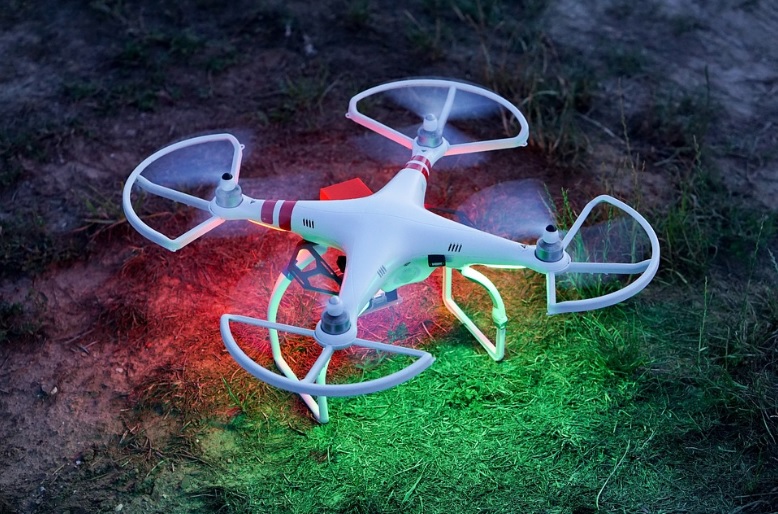
Gone are the days when kites soar and rule the open sky. People have a new way of spending their free time now with the addition of exploring their environment from the comforts of their own home—drones!
In this article, we will talk about one of the most essential parts of quadcopters, whether it is a ready-to-fly or DIY device—the motor. This component produces the much-needed thrust needed for the drone to take-off to the sky.
So, what type of motors are used in drones?
Brushed Motors
Brushed motors feature a rotating framework, functioning like an electromagnet with 2 poles. An attached rotary switch helps in reversing a current direction for each half series, thus the poles can be pushed and pulled in contrast to the permanent magnets connected to the outside motor.
Brushed versions are relatively cheap and super easy to use. However, they can be quite heavy and not suitable for turning.
Advantages:
- Ease of use
- Affordable
- Two-wire control
- Suitable for extreme conditions
- Fixed speeds do not require a controller
Disadvantages:
- Heavy
- Speed and torque is flat
- Requires maintenance
- Low efficiency, power, and speed
- Shorter lifespan
Brushless Motors
If you want a lightweight motor, then the brushless version is the best option. This type of motor features a stationary magnet and switches using electronic divergence changes.
Its movements can be controlled via dedicated electronic controllers in addition to speed feedback instruments. Brushless motors are typically used for quads that need greater rotational speed to take off.
Advantages:
- Better efficiency and longevity
- Durable and reliable
- More powerful than brushed motors
- Does not require regular maintenance
Disadvantages:
- Expensive construction
- Complicated and expensive control
- ESC is required to keep it running, which is costlier than the engine itself
Disc Type Motors
As its name implies, these high power motors are essentially shaped as discs. These motors are often lightweight and therefore generate a much higher torque during flight.
Not only that, but these versatile servo motors also have a higher pole count and lower Kv value. Meaning, you will need larger propellers for your drone. However, they should be able to give you more stable flights with minimal noise and turbulence as well as longer flight times.
Unfortunately, disc motors tend to be quite expensive with a quad requiring at least 4 of these engines in order to fly smoothly. Thus, most people will skip the disc and go with the barrel type motors.
However, for aerial photography and videography enthusiasts, a disc type motor is a must-have.
Barrel Type Motors
These motors look like barrels and have the opposite action to that of the disc-type motors. Barrel Motors are heavier and can generate less torque compared to their disc counterpart. They feature lower pole counts and higher Kv value for quick movements but not-so-stable flights as disc motors.
How to Choose the Best Motor for Your Quadcopter?
Now that you know what type of motors are used in drones, here are the things you need to take into consideration when choosing drone motors.
Thrust-to-weight ratio
In terms of choosing your best option, there’s a general rule you should follow. Your quad should be able to at least hover at around half throttle. Meaning, when you choose a suitable engine for your quad, you need to make sure that it can give off 50% more drive than multirotor. Also, the quadcopter motor should also remain functional and stable even in times of windy conditions.
Now, if you are considering a mini quadcopter, then you should focus on agility. Meaning, you will need a motor with a higher thrust to weight ratio. However, if you’re into quadcopter photography you’ll only need a low thrust to weight ratio since you will be hovering gently.
Efficiency of the motor
If you want your hybrid drone to fly longer, then you need to invest in a high-efficiency motor. The best-recommended options are quadcopters with an efficiency of over seven.
Still, there are some large motors that can work with up to 18 efficiencies, which are more commonly used for aerial photography.
Meanwhile, if you choose to make your drone do some quick turns in the air, then you need to go with motors with higher RPMs. Take note that as the drone becomes quicker, the efficiency is also reduced.
Motor movements
Quadcopters involve the movement of two motors moving in an anti-clockwise direction while two more are going in a clockwise direction. This movement ensures the high stability of the device.
You can install motors on your drone that moves in the same direction. But, it would make it harder for you to fly the drone since it will be unresponsive to your control. Thus you need 2 pairs of motors moving in the opposite direction.
Pole count
With pole count, you have 2 options:
Higher Pole Count
A quadcopter motor with a higher pole count will need more voltage during flights but will be able to produce a greater motor torque. However this also means that the motor will have lower RPM, thus it is best to use larger blades with this type.
Lower Pole Count
Meanwhile, a lower pole count means higher RPM. These devices will require smaller blades so they will have smaller torque or lift off the ground. Most drone motors use higher pole counts to eliminate the need for a gearbox.
Kv value
Kv value is basically the constant RPM of the motor when a potential difference of 1 volt is applied across the drone motor.
As mentioned before, the lower the pole count, the higher the Kv value is and vice versa. When the Kv value decreases, there is also an immediate increase in the motor torque.
Thus, resulting in a powerful lift and higher acceleration. So, for drones with heavier materials such as cameras or frames, you will need to get a motor with more Kv value.
And for higher Kv, you will need the smaller propellers to guarantee speeds but lower efficiency.
Propeller–Motor Combination
Most people would choose the propellers first then choose the motors that work with them after.
Larger propellers can be around 12 inches and could carry heavier equipment like cameras. They also offer higher acceleration, more thrust, and stable flights.
Smaller propellers, on the other hand, are usually 8 inches or smaller, making them great for quad racing and mini quads since they can produce greater speeds and make acrobatic moves.
When choosing propellers that go best with the motor, you need to keep in mind these 2 factors:
Pitch
Pitch is defined as the distance covered in one rotation of the propeller. The lower pitch means a higher thrust generated. It also means having long flight times, the ability to carry heavier weights, and flights free from turbulence.
For the mini drones that need acrobatic movements, you need to go with the larger pitch propellers.
Diameter
Larger propellers offer more thrust and therefore affect the thrust to weight ratio of your drone motor. The opposite happens with smaller propellers since they generate less thrust.
Conclusion
Choosing the right motor for your drone can be quite daunting. You’ve got a lot of considerations to make on how to know which drone to buy.
So, we hope this article has provided you with better insight into the purposes and what type of motors are used in drones and how you can choose the right one for you.
Are you still confused or don’t know which motor should you choose? Fire up the comment section below and we can help discuss your options.







Leave a Reply